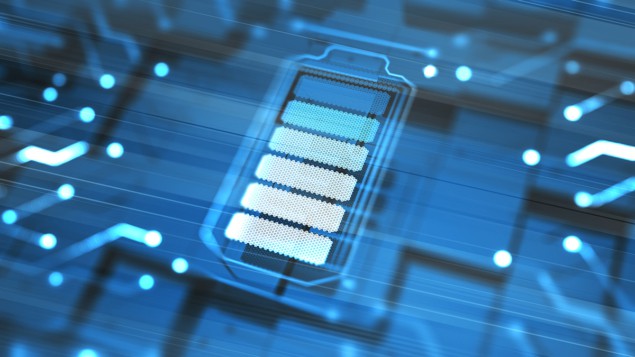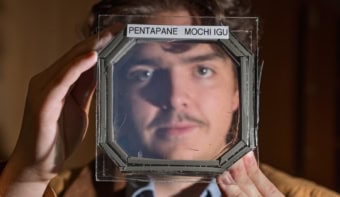
A new high-energy density and stable lithium-ion battery that works by reversible oxide-peroxide conversion could help in the development of improved “sealed” battery technologies. This is the new result from a team of researchers in Japan and China who have designed an oxygen-free cell in which the Li2O to Li2O2 reaction can take place.
Lithium-ion batteries are hitting the headlines this week with news of this year’s Nobel Prize for Chemistry being awarded to John Goodenough, Stanley Whittingham and Akira Yoshino for the development of these devices.
Lithium is the material of choice in these batteries because it has a high specific capacity and low electrochemical potential. In recent years, focus has shifted from the rigid Li-intercalation structures commonly employed in the conventional heavy lithium-transition metal oxide cathodes used in these devices to Li-O2 battery technology that exploits oxygen-related redox chemistries that have excellent theoretical gravimetric energy densities.
Redox reaction between O2 and Li2O2
These batteries work thanks to the redox reaction between O2 and lithium peroxide, Li2O2. One of the main hurdles hindering their practical application, however, is that they require O2 gas as the active species. This needs to be supplied by bulky O2 storage or gas purification devices.
To overcome this problem, and the so-called O2 crossover and electrolyte volatilization in these batteries, researchers led by Haoshen Zhou of the National Institute of Advanced Industrial Science and Technology (AIST) and Nanjing University in China have now designed an O2-free sealed environment for the Li2O to Li2O2 reaction.

High-energy density, rechargeable and stable Li-ion battery
Zhou and colleagues did this by embedding Li2O nanoparticles into an iridium-reduced graphene oxide (Ir-rGO) catalytic substrate to successfully control the charging potential within a small region of the device and avoid the unwanted phenomenon of over-polarization.
“The choice of Ir nanoparticles as the catalyst is key, as is the conductive rGO substrate,” explains Zhou. “The Ir can effectively enhance the reaction kinetics and protect the newly formed Li2O2 from further decomposition (by the formation of the inter-metallic Li2-xO2-Ir compound formed on the particles/substrate interface) while the rGO allows for the remarkable electrical conductivity of the system.”
The researchers also restrained two other serious problems that beset sealed redox systems: the irreversible evolution of O2 and the production of superoxide (an aggressive and dangerous product). They did this by controlling the degree of the electrochemical reaction and its cycling depth and thus succeeded in producing a reversible capacity for the device of 400 mAh/g, a value that fares well when compared to other cathode candidates for Li-ion batteries.
The result is a high-energy density (1090 Wh/kg), high energy efficiency (a mere 0.12 V polarization potential), rechargeable Li-ion battery technology that is stable over 2000 cycles with 99.5% coulombic efficiency.

Lithium-ion battery pioneers bag chemistry Nobel prize
Although he and his colleagues still need to fully understand the catalysis mechanism at play in the cell, Zhou believes that the sealed Li2O/Li2O2 battery system could gradually replace today’s open-cell Li-O2 batteries and even become a a “hot” topic for next-generation battery research. “From an applications viewpoint, the very competitive properties of the sealed system could help in the development of cathode materials for commercial Li-ion battery technology,” he tells Physics World.
The researchers, reporting their work in Nature Catalysis 10.1038/s41929-019-0362-z, say they are now looking for more effective catalysts to further boost the reversible capacity region in their device and enhance the reaction kinetics.



